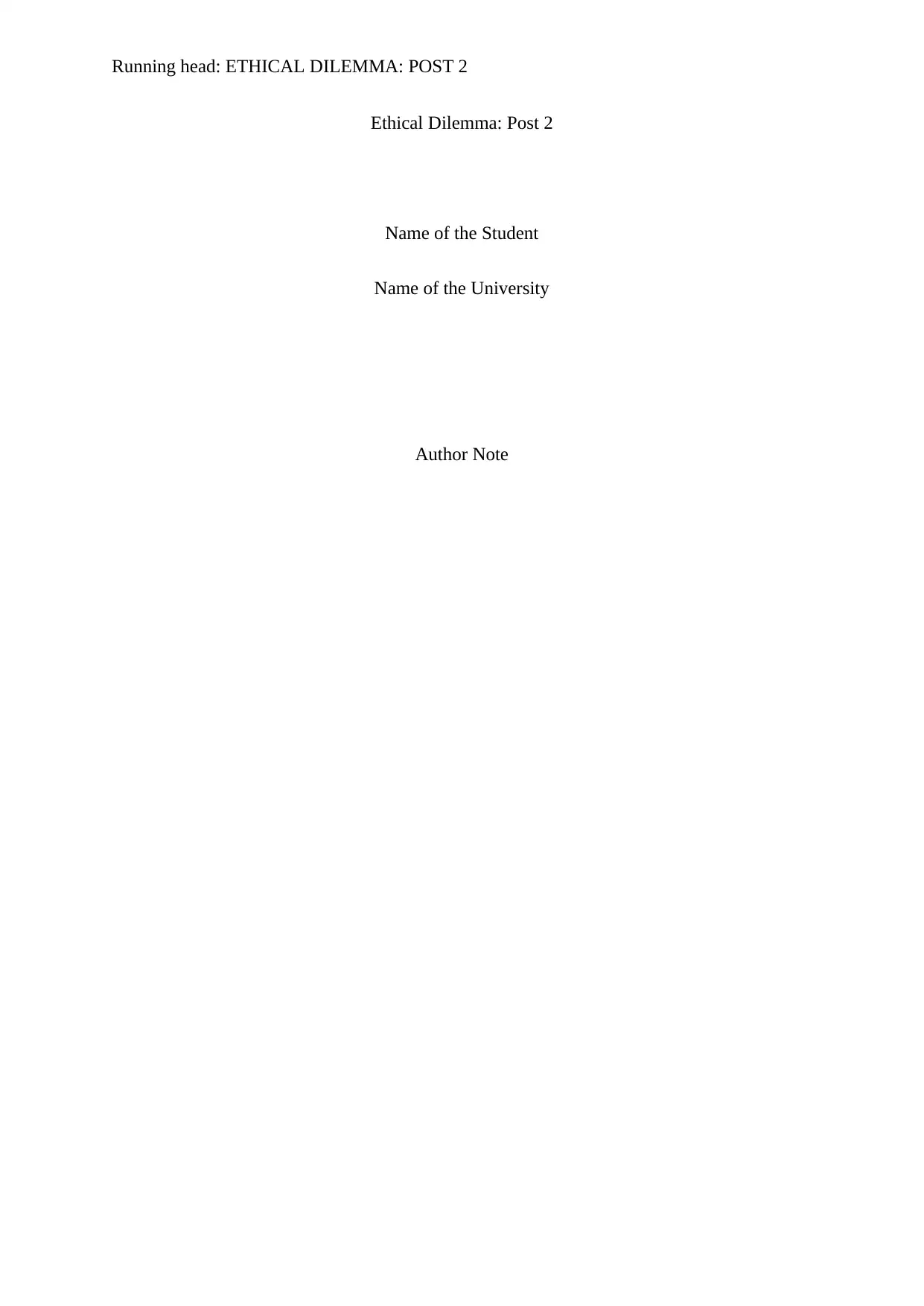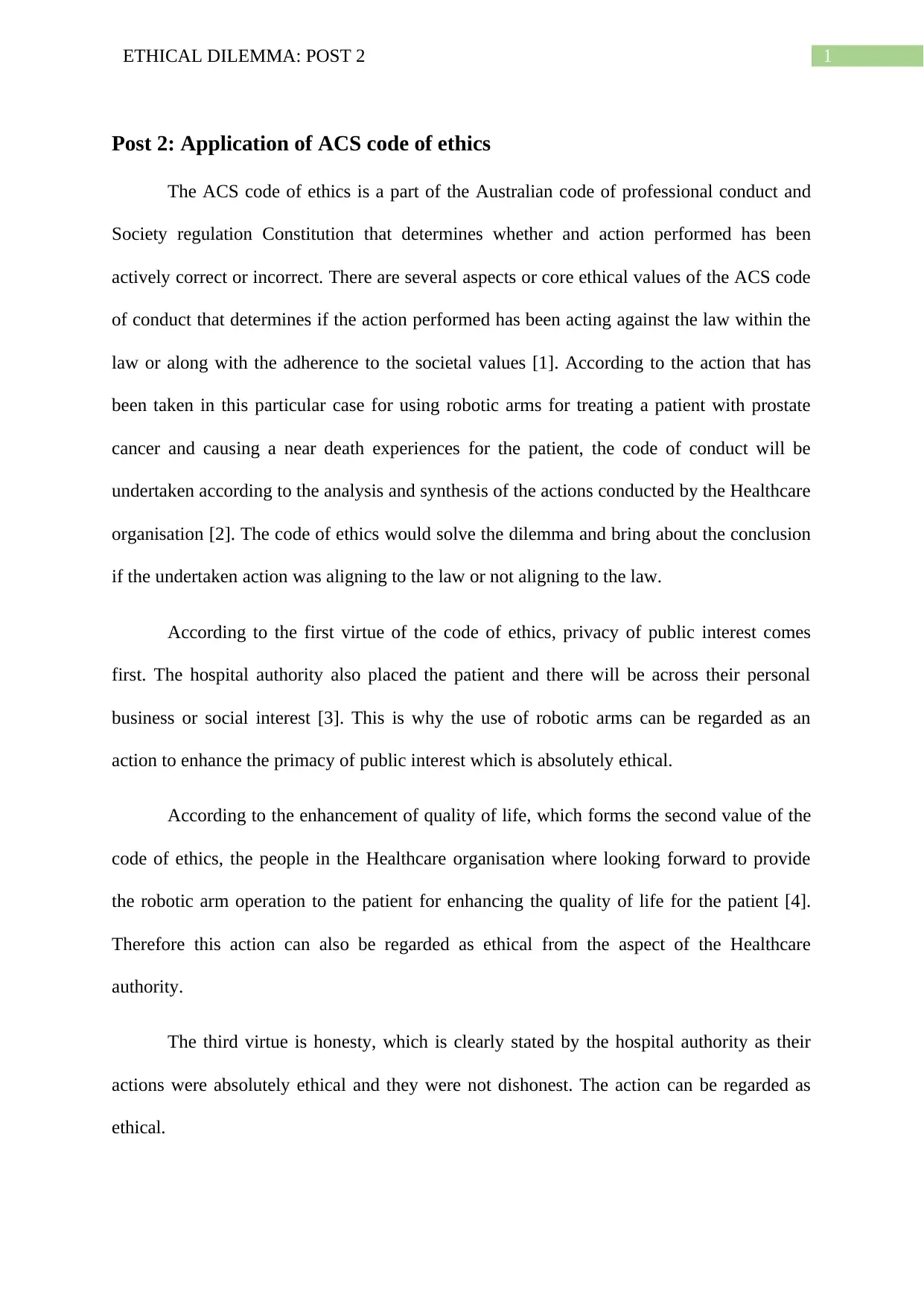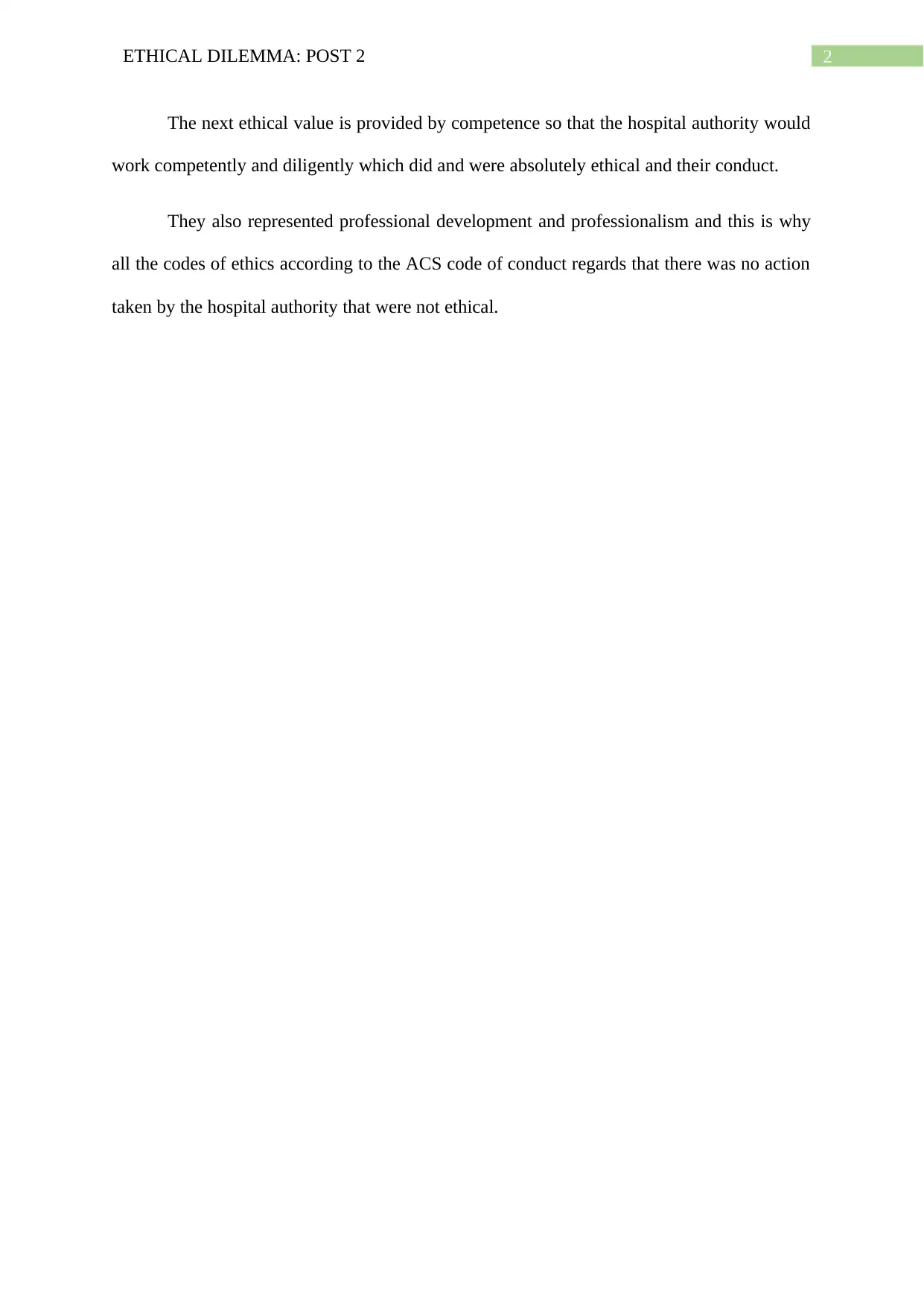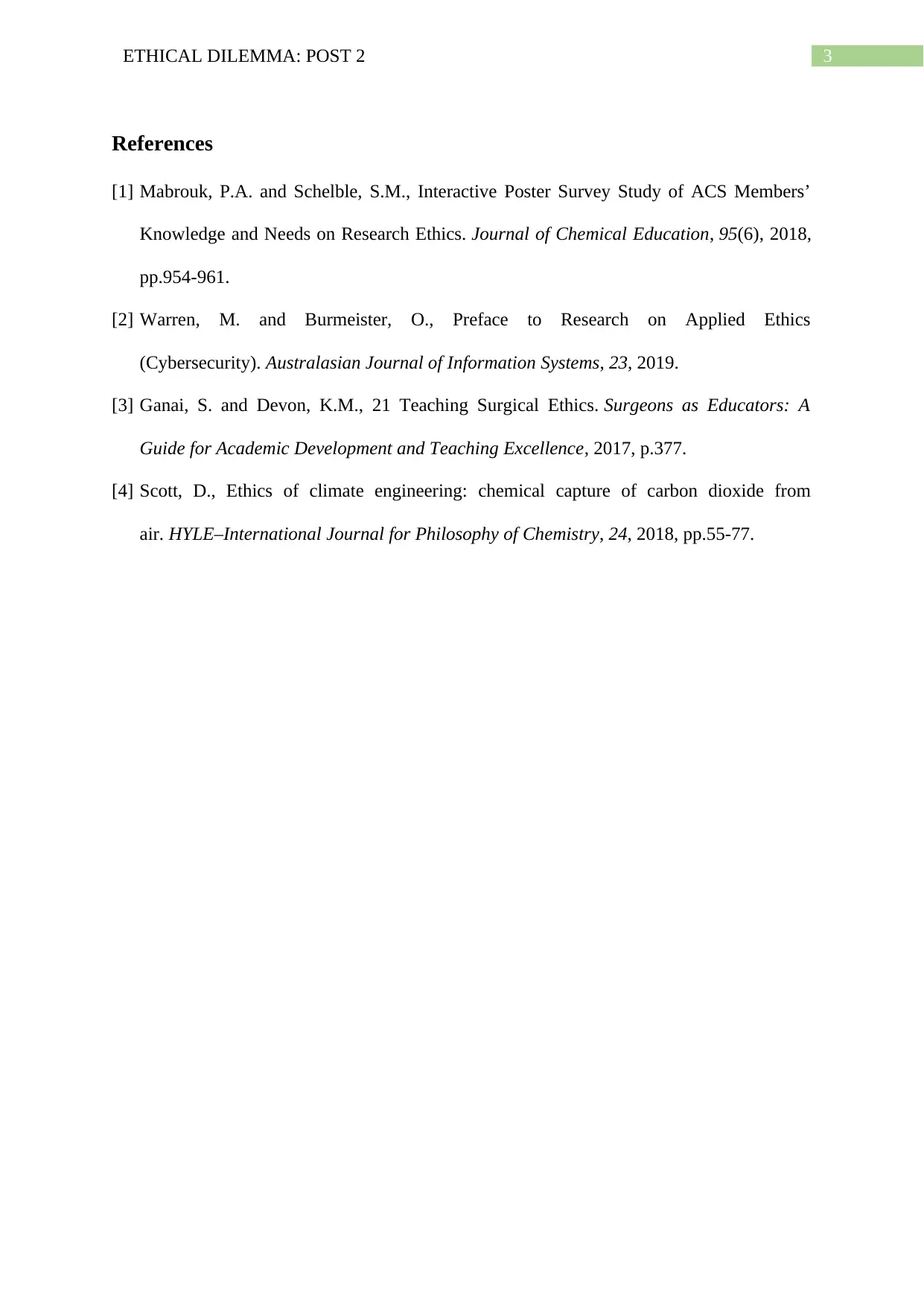IT Service Management: Ethical Dilemma Post 2 - ACS Code Review
VerifiedAdded on 2022/09/18
|4
|567
|18
Discussion Board Post
AI Summary
This discussion board post examines an ethical dilemma concerning robotic surgery and its impact on patient care. The author analyzes a case study where a patient undergoing prostate cancer treatment experienced a near-death experience due to the use of robotic arms. The post applies the ACS code of ethics, a part of the Australian code of professional conduct, to evaluate the actions of the healthcare organization. The analysis considers the ethical values of privacy, enhancement of quality of life, honesty, and competence. The author concludes that the hospital authority's actions align with the ACS code of ethics, as they prioritize public interest, aim to enhance the patient's quality of life, and demonstrate honesty and competence. References to relevant literature support the analysis.
1 out of 4











![[object Object]](/_next/static/media/star-bottom.7253800d.svg)